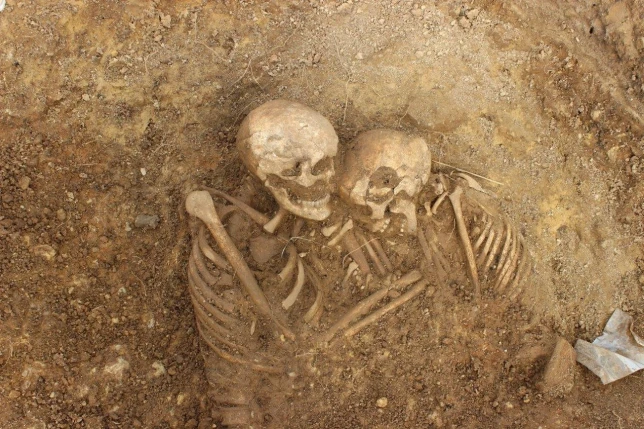A huge burial site dating back to the fall of the Roman Empire in Britain has been unearthed in Leeds.

The remains of 61 bodies were found at the hidden cemetery, in what is being hailed as a ‘once-in-a-lifetime’ discovery.
It had been marked for development and underwent a standard archaeological survey before the excavation.
But it’s historical significance was revealed by the detection of a lead coffin, showing someone of importance was buried there.
This turned out to be a high-status Roman woman who died 1,600 years ago.
David Hunter, principal archaeologist for West Yorkshire Archaeology Advisory Service, said: ‘Lead coffins were expensive. The fact the family gave this person the expense of getting sheets of lead and the expertise to make the coffin, then it tells us a lot.’
The site also contains many Anglo-Saxon remains, making it the first Anglo-Saxon cemetery ever found in West Yorkshire.
Among the objects found in the graves include personal possessions, such as knives and pottery, helping to reveal more about early Christian burial practices.

The bodies date back to the fall of the Roman Empire in Britain (Picture: SWNS)

The discovery of a lead coffin indicated someone of importance was buried at the site (Picture: Leeds City Council)

This turned out to contain a high-status Roman woman (Picture: Leeds City Council)

Carbon dating and chemical analysis will be able to show how much the lives of those buried here overlapped (Picture: Leeds City Council)

Personal possessions were discovered among the remains (Picture: Leeds City Council)
Mr Hunter called the discovery a highlight of his career, saying: ‘This has the potential to be a find of massive significance for what we understand about the development of ancient Britain and Yorkshire.
‘The presence of two communities using the same burial site is highly unusual and whether their use of this graveyard overlapped or not will determine just how significant the find is.’
The archaeological dig has finished but the remains will be taken away for carbon dating and chemical testing, which should reveal the exact dates on which the bodies were buried.
There will also be extensive analysis for indications of disease or injury, as around half of the bodies found are younger than full adult age.
But some details about those buried will never be known, with Mr Hunter adding: ‘We can find out through archaeological means and by scientific techniques a lot about their lives and where they came from but unfortunately we will never know their names.’
Source: metro.co.uk








